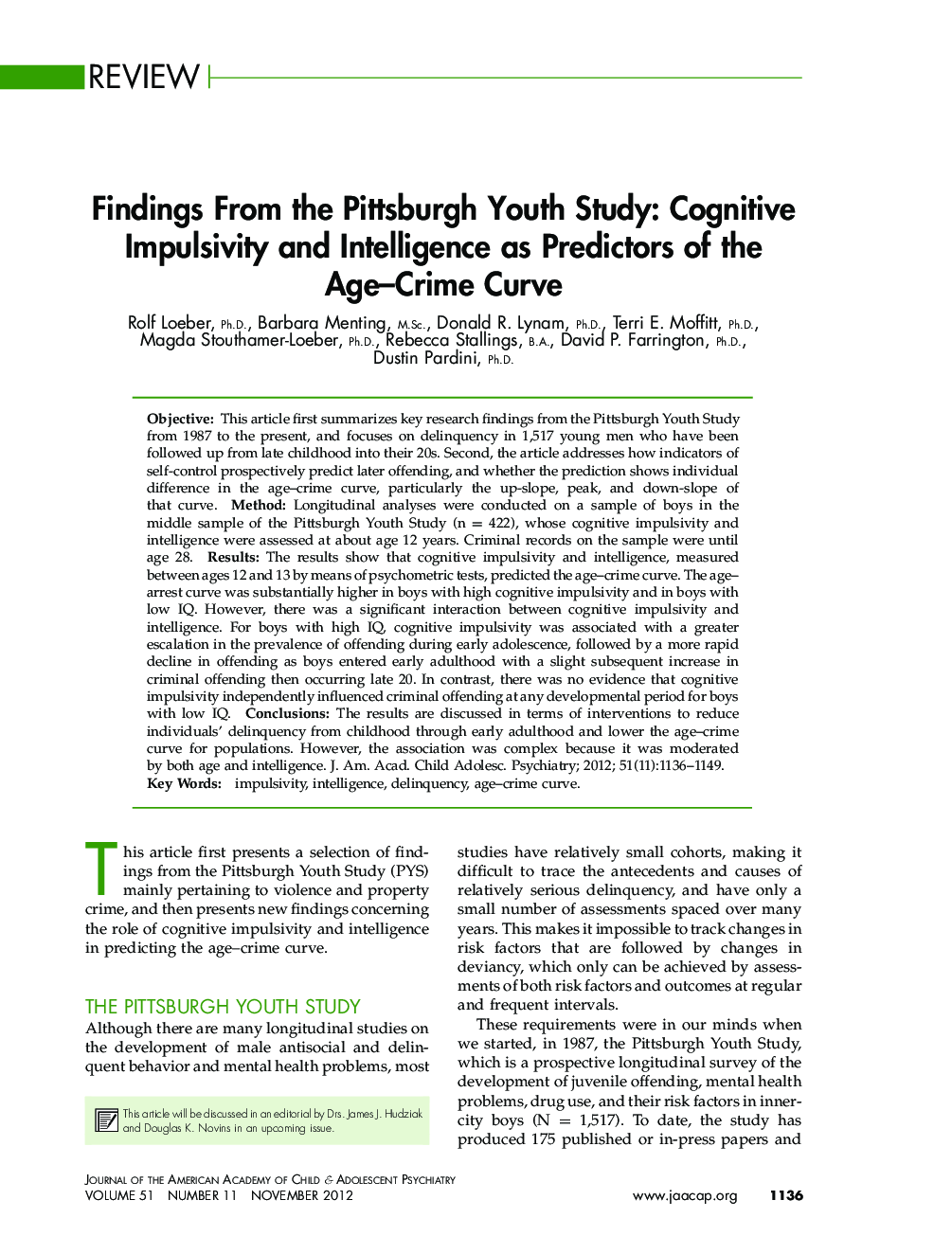| کد مقاله | کد نشریه | سال انتشار | مقاله انگلیسی | نسخه تمام متن |
|---|---|---|---|---|
| 324205 | 1432970 | 2012 | 14 صفحه PDF | دانلود رایگان |

ObjectiveThis article first summarizes key research findings from the Pittsburgh Youth Study from 1987 to the present, and focuses on delinquency in 1,517 young men who have been followed up from late childhood into their 20s. Second, the article addresses how indicators of self-control prospectively predict later offending, and whether the prediction shows individual difference in the age–crime curve, particularly the up-slope, peak, and down-slope of that curve.MethodLongitudinal analyses were conducted on a sample of boys in the middle sample of the Pittsburgh Youth Study (n = 422), whose cognitive impulsivity and intelligence were assessed at about age 12 years. Criminal records on the sample were until age 28.ResultsThe results show that cognitive impulsivity and intelligence, measured between ages 12 and 13 by means of psychometric tests, predicted the age–crime curve. The age–arrest curve was substantially higher in boys with high cognitive impulsivity and in boys with low IQ. However, there was a significant interaction between cognitive impulsivity and intelligence. For boys with high IQ, cognitive impulsivity was associated with a greater escalation in the prevalence of offending during early adolescence, followed by a more rapid decline in offending as boys entered early adulthood with a slight subsequent increase in criminal offending then occurring late 20. In contrast, there was no evidence that cognitive impulsivity independently influenced criminal offending at any developmental period for boys with low IQ.ConclusionsThe results are discussed in terms of interventions to reduce individuals' delinquency from childhood through early adulthood and lower the age–crime curve for populations. However, the association was complex because it was moderated by both age and intelligence.
Journal: Journal of the American Academy of Child & Adolescent Psychiatry - Volume 51, Issue 11, November 2012, Pages 1136–1149